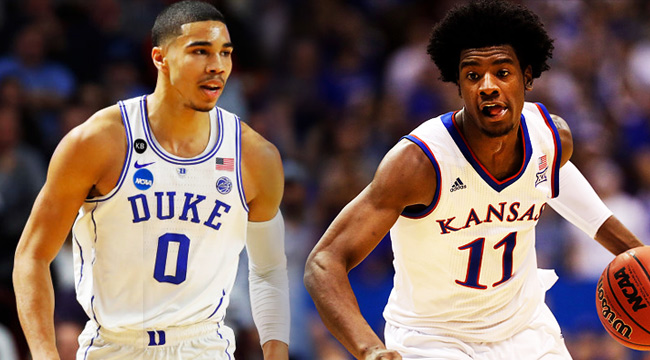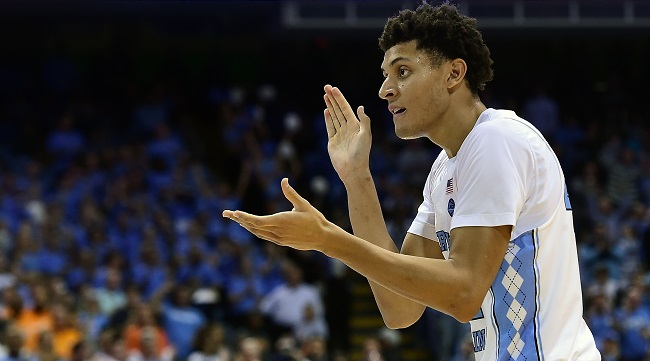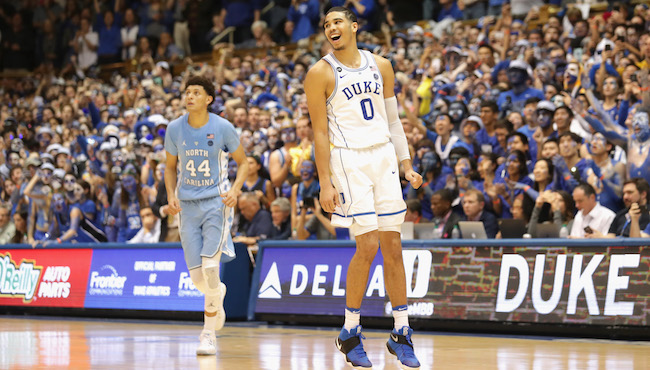
In the current NBA world, it is often quite difficult to differentiate between shooting guards and small forwards. In some systems, the two positions are completely interchangeable and, in others, there are only marginal differences. In this space, though, small forwards are players who can effectively (or at least theoretically) defend big, physical wings and even flash into the small-ball four conversation when needed.
Nothing is rigid in terms of positional characterization at this point but, when taking this year’s NBA Draft class into account, there is some real talent at the 3 spot. Today’s goal will be to uncover the top five available small forwards but, before we get there, let’s get it started with five honorable mentions that warrant consideration at a later point in the draft process.
Honorable Mention (In Alphabetical Order)
- Jaron Blossomgame, Clemson – As a junior, Blossomgame shot 44.6 percent from three. As a senior, Blossomgame shot 25.5 percent from three. Which is real? That is the big question for a highly productive player in the ACC that will be 24 before his rookie season begins.
- Dillon Brooks, Oregon – Brooks is more famous than the average NBA Draft prospect, simply because he was an effective and prominent player at Oregon for quite some time. His measurables won’t do him any favors, though, as Brooks checked in at 6’6 with a 6’6 wingspan. Given that he already wasn’t an elite athlete or floor spacer, that lowers his ceiling considerably.
- Wesley Iwundu, Kansas State – Iwundu is the polar opposite of Brooks in that he flashes insane length (7’1 wingspan) with far less polish. If you buy his three-point shooting (38 percent) from his final college season, it is easy to be seduced by Iwundu’s 3-and-D profile. If you don’t, he probably isn’t a prospect at all. Sometimes, it is that narrow of a margin.
- Devin Robinson, Florida – Robinson is an insane athlete with big hands and a wingspan north of 7’0. The big question is whether he can actually play at this level but it seems likely that an NBA team will be seduced by the mere possibility that everything clicks.
- Sindarius Thornwell, South Carolina – Thornwell is highly divisive after an impressive NCAA Tournament run. He measured at less than 6’5 and isn’t a tremendous athlete or shooter. Thornwell does bring a certain intensity level defensively, though, and his 6’10 wingspan and competitiveness can level the playing field. He’s an intriguing second-round pick.
5) Semi Ojeleye, SMU
If you aren’t a college basketball diehard and Ojeleye’s name seems familiar to you, it is probably because he was once a five-star recruit for the Duke Blue Devils. After two years in Durham and a one-year transfer hiatus, Ojeleye burst back on to the scene last season at SMU and he was utterly tremendous. The 6’7 combo forward shot 42.4 percent from three on nearly five attempts per game and he operated with efficiency as a No. 1 option.
In the NBA, he won’t be that type of player but Ojeleye is a perfect 3-and-D case in that he can space the floor with a sustainable jump shot and defend multiple positions based on his thick, strong frame. He’s not a lottery pick based on the relatively limited upside but one team will be quite pleased in the 20s with Ojeleye on board.
4) Justin Jackson, North Carolina

Jackson is already 22 years old and, based on limited athleticism, there is some peril to believing he’ll be more than a role player. With that said, role players can be extremely value as mid-to-late first round picks and Jackson profiles as that. The big question is whether his shooting from the 2016-2017 season is real, as Jackson converted 37 percent of threes (on big-time volume) after struggling to a 30 percent clip in the previous two seasons.
If that sustains, Jackson can use his defensive length and aptitude to serve as a two-way player and he showed more proficiency as a crafty scorer down the stretch of the season.
3) Terrance Ferguson, Australia
There is a chance that Ferguson doesn’t belong this high and that players like Ojeleye and Jackson will make me look silly for this ranking. Ferguson, who was once committed to both Alabama and Arizona, spent his “one-and-done” season abroad in Australia and, while he enjoyed himself, the lanky wing wasn’t terribly effective in a limited role. That hiccup requires this perch to be chalked full of projection.
Ferguson is a legitimate 6’7 with high-end athletic burst and a pretty jump shot. The big divide when evaluating him is whether that stroke will translate into efficiency but, if you buy that, his upside is quite a bit higher than that of his veteran college counterparts. Athleticism matters.
2) Jayson Tatum, Duke

From Ferguson to Tatum, we take a jump of at least one tier and, frankly, it is probably more than that. Tatum is solidly a top-eight prospect and, for many, he is on the short list of the best players in this class. The one-and-done Duke forward is a big-time scorer that has drawn comparisons to Carmelo Anthony and Rudy Gay. Some of that is admittedly backhanded, but there is something to be said for a player that can create his own offense at any time in the shot clock.
There are questions about his defensive impact and just how good he is athletically but the big concern is with his ability to stretch his jumper to the three-point line. Tatum made only 34 percent of his threes in college and, while that is a small, one-year sample, he’ll need to be able to make that shot efficiently and consistently to maximize his considerable potential. It would be fair to say that Tatum’s profile is not one that I enjoy immensely and he might be unfairly punished as a result. Regardless, he’s a lock in the top ten for a reason.
1) Josh Jackson, Kansas
In many ways, Tatum is safer than Jackson, simply because we absolutely know he will be able to get buckets at the NBA level. In Jackson, you have a more diverse player that is well known for his competitive streak and, in plain terms, the former Kansas standout is a crazy athlete. That type of burst should play well on both ends and, for me, Jackson’s defensive upside is tantalizing based on length and overall awareness.
Tatum’s shooting concerns are with the ability to stretch the floor but, for Jackson, there is a real question about his stroke in general. It certainly is not what you would teach to youngsters and his 37.8 percent clip as a freshman doesn’t scream of sustainability. On the bright side, Jackson could still be a highly functional and useful role player even with a questionable jump shot and that helps to raise his floor considerably.
To reach the level associated with a top-five draft pick, however, Jackson is going to need to make shots and/or improve as a creator. Only time will tell in that regard but he’s a tremendous overall prospect.






